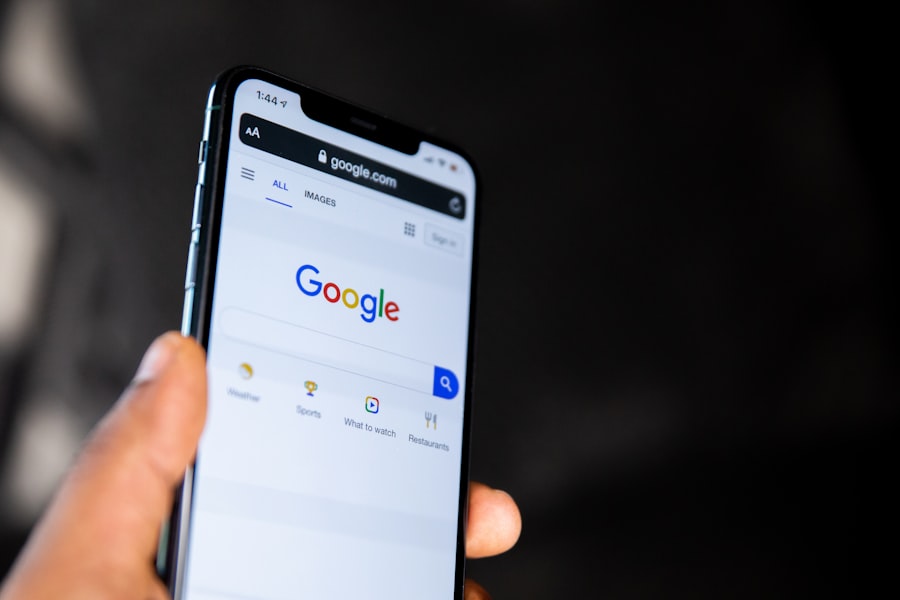Micro-moments are fleeting instances when consumers turn to their devices to act on a need or desire, whether it be to learn something, do something, discover something, or buy something. These moments are characterized by their immediacy and the intent behind them, often occurring in real-time as individuals seek quick answers or solutions. In an age where information is readily accessible at our fingertips, understanding micro-moments is crucial for businesses aiming to connect with their audience effectively.
They represent a shift in consumer behavior, where traditional marketing strategies may fall short. Instead of waiting for consumers to engage with brands through conventional channels, businesses must recognize and respond to these spontaneous moments of intent. The significance of micro-moments lies in their potential to influence consumer decisions and drive engagement.
As people increasingly rely on their smartphones and other digital devices, the opportunities for brands to capture attention during these critical junctures have multiplied. For instance, a person might search for a nearby restaurant while on the go or look up product reviews before making a purchase. These moments are not just trivial; they can lead to immediate actions such as visiting a store, making an online purchase, or sharing information with others.
Therefore, understanding micro-moments is essential for marketers who wish to create meaningful connections with their audience and ultimately drive conversions.
Key Takeaways
- Micro-moments are brief, intent-driven moments when consumers turn to their devices for quick answers, and they are crucial in shaping consumer decisions.
- Identifying micro-moments in the customer journey involves understanding the different types of micro-moments, such as “I want to know,” “I want to go,” “I want to do,” and “I want to buy.”
- Leveraging micro-moments for SEO requires optimizing for mobile, understanding user intent, and providing relevant, concise, and helpful content.
- Creating content for micro-moments involves understanding user needs, providing quick answers, and using formats such as lists, videos, and how-to guides.
- Optimizing your website for micro-moments involves improving page speed, implementing structured data, and optimizing for local search and voice search.
Identifying Micro-Moments in the Customer Journey
Understanding the Complex Customer Journey
Identifying micro-moments within the customer journey requires a keen understanding of consumer behavior and the various touchpoints that influence decision-making. The customer journey is no longer linear; it is a complex web of interactions that can occur across multiple channels and devices. By mapping out this journey, businesses can pinpoint specific moments when consumers are most likely to seek information or make decisions.
Recognizing Micro-Moments Across the Customer Journey
For example, during the research phase of a purchase, a consumer may experience a micro-moment when they ask their smartphone, “What are the best running shoes?” This moment is critical as it represents an opportunity for brands to provide valuable content that addresses the consumer’s query. Moreover, recognizing micro-moments extends beyond just the research phase; it encompasses various stages of the customer journey, including consideration and decision-making. A consumer might experience a moment of curiosity when browsing social media and come across an advertisement for a product they had not previously considered.
The Power of Data Analysis in Micro-Moment Identification
This moment can lead to further exploration and ultimately influence their purchasing decision. By analyzing data from customer interactions and feedback, businesses can better understand these micro-moments and tailor their marketing strategies accordingly. This proactive approach allows brands to be present at the right time and place, enhancing the likelihood of conversion.
Leveraging Micro-Moments for SEO: Strategies and Best Practices

To effectively leverage micro-moments for SEO, businesses must adopt strategies that align with the intent behind these fleeting instances. One of the most effective approaches is to optimize content for voice search, as many micro-moments occur through voice-activated devices. Consumers often phrase their queries in natural language when using voice search, so businesses should focus on long-tail keywords that reflect this conversational style.
By creating content that answers specific questions or provides solutions to common problems, brands can position themselves as authoritative sources during these critical moments. Additionally, local SEO plays a pivotal role in capturing micro-moments, especially for businesses with physical locations. When consumers search for services or products nearby, they are often ready to make immediate decisions.
Ensuring that business listings are accurate and up-to-date on platforms like Google My Business can significantly enhance visibility during these moments. Furthermore, incorporating location-based keywords into website content can help attract local customers who are seeking immediate solutions. By combining voice search optimization with local SEO strategies, businesses can effectively capitalize on micro-moments and drive relevant traffic to their websites.
Creating Content for Micro-Moments: Tips and Examples
Creating content tailored for micro-moments requires a strategic approach that prioritizes brevity and relevance. Given the nature of these moments, consumers are often looking for quick answers rather than in-depth articles. Therefore, businesses should focus on producing concise content that directly addresses common questions or needs within their industry.
For instance, a travel agency could create short videos or infographics that highlight top destinations for weekend getaways, catering to individuals who are spontaneously planning trips. This type of content not only captures attention but also encourages sharing among users who find it valuable. Moreover, utilizing various formats can enhance engagement during micro-moments.
Interactive content such as quizzes or polls can draw users in and encourage them to explore further. For example, a skincare brand might develop a quiz that helps users identify their skin type and recommends suitable products based on their results. This not only provides immediate value but also fosters a connection between the brand and the consumer.
By understanding the context of micro-moments and creating content that resonates with users’ needs, businesses can effectively position themselves as go-to resources during these critical decision-making junctures.
Optimizing Your Website for Micro-Moments: Technical Considerations
Optimizing your website for micro-moments involves several technical considerations that ensure seamless user experiences across devices. Given that many micro-moments occur on mobile devices, it is imperative that websites are mobile-friendly and load quickly. A slow-loading site can lead to frustration and increased bounce rates, causing potential customers to seek information elsewhere.
Implementing responsive design principles ensures that your website adapts to various screen sizes while maintaining functionality and aesthetics. Additionally, optimizing images and minimizing unnecessary scripts can significantly enhance loading times. Another critical aspect of technical optimization is ensuring that your website’s structure is intuitive and easy to navigate.
Users should be able to find information quickly without having to sift through multiple pages. Implementing clear calls-to-action (CTAs) can guide users toward desired actions during their micro-moments. For instance, if a consumer is searching for a specific product, having prominent links to product pages or contact information can facilitate immediate engagement.
By focusing on both mobile optimization and user-friendly navigation, businesses can create an environment conducive to capturing micro-moments effectively.
Measuring the Impact of Micro-Moments on SEO

Measuring the impact of micro-moments on SEO requires a combination of analytics tools and performance metrics that provide insights into user behavior during these critical instances. One effective method is to track engagement metrics such as click-through rates (CTR) and bounce rates for specific content designed to address micro-moments. Analyzing how users interact with this content can reveal valuable information about its effectiveness in capturing attention and driving conversions.
For example, if a blog post answering common questions receives high traffic but low engagement time, it may indicate that while users are interested in the topic, the content may not be meeting their needs adequately. Additionally, utilizing tools like Google Analytics can help businesses identify which keywords are driving traffic during micro-moments. By examining search queries that lead users to your site, you can gain insights into the specific intents behind those searches.
This data can inform future content creation efforts and SEO strategies by highlighting areas where you may need to improve visibility or relevance. Ultimately, measuring the impact of micro-moments on SEO involves continuous monitoring and adaptation based on user behavior and preferences.
Adapting Your SEO Strategy to Capitalize on Micro-Moments
Adapting your SEO strategy to capitalize on micro-moments necessitates a proactive approach that embraces change and innovation in response to evolving consumer behaviors. As technology continues to advance and new platforms emerge, staying attuned to how consumers engage with content is vital for success. This may involve regularly updating keyword strategies based on emerging trends or shifts in user intent.
For instance, if voice search becomes increasingly prevalent among your target audience, integrating voice-friendly keywords into your content strategy will be essential. Furthermore, fostering collaboration between marketing teams and data analysts can enhance your ability to respond effectively to micro-moments. By sharing insights from customer interactions and feedback, teams can develop targeted campaigns that resonate with users during these critical junctures.
Additionally, leveraging social media platforms as part of your SEO strategy can amplify your reach during micro-moments by promoting timely content that aligns with current trends or events. In essence, adapting your SEO strategy requires agility and a willingness to experiment with new approaches while remaining focused on delivering value during those fleeting moments when consumers seek immediate answers or solutions.
If you’re interested in leveraging micro-moments for SEO, you might also find value in exploring the best tools that can support your strategy. A related article that could be particularly useful is Best Software for Small Business in 2023. This guide reviews various software tools that can help you optimize your online presence, manage customer interactions effectively, and analyze data to make informed marketing decisions. Understanding and utilizing the right software can enhance your ability to capitalize on micro-moments, making your SEO efforts more effective.
FAQs
What are micro-moments?
Micro-moments are small, intent-driven moments when consumers turn to their devices to act on a need – to know, go, do, or buy.
How can you leverage micro-moments for SEO?
To leverage micro-moments for SEO, businesses can create content that is relevant and useful to consumers in these moments, optimize for mobile, and ensure that their website provides a seamless user experience.
Why are micro-moments important for SEO?
Micro-moments are important for SEO because they represent opportunities for businesses to connect with consumers at the exact moment they are looking for information, products, or services, and to provide them with the answers and solutions they need.
What types of micro-moments are there?
There are four main types of micro-moments: “I want to know” moments, “I want to go” moments, “I want to do” moments, and “I want to buy” moments. Each type represents a specific consumer intent and need.
How can businesses identify micro-moments relevant to their industry?
Businesses can identify micro-moments relevant to their industry by conducting research to understand their target audience’s behaviors, needs, and pain points, and by analyzing search data and consumer insights to uncover the specific moments when consumers are most likely to engage with their brand.

